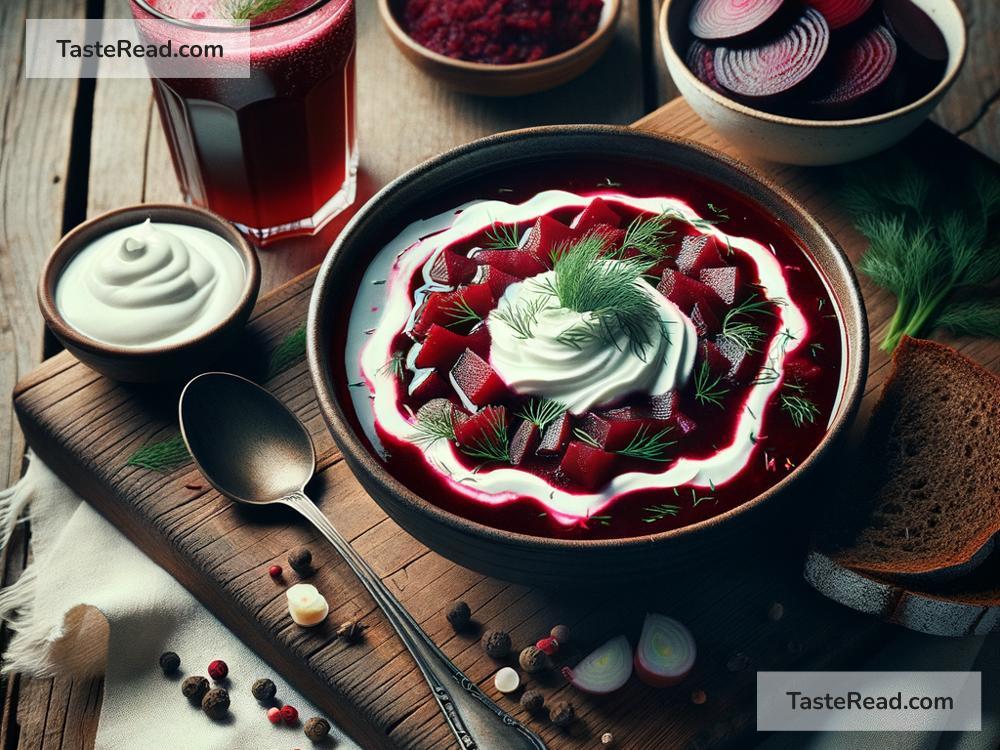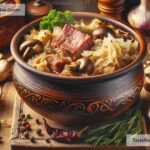Discovering Traditional Russian Borscht and Regional Variations
Borscht is more than just a soup in Russia—it’s a symbol of tradition, comfort, and family meals. Across generations, families gather around steaming bowls of this flavorful dish, sharing stories and love. At its core, borscht is a beet-based soup, but it’s far from simple. It’s a vibrant mixture of nutritious ingredients like vegetables, meat, herbs, and spices. Let’s dive into the world of traditional Russian borscht and explore its regional variations.
What is Traditional Russian Borscht?
Russian borscht is a hearty beet soup that comes with layers of flavors. The star ingredient is red beets, which give the soup its iconic bright, ruby-red color. But borscht is much more than beets. It typically includes cabbage, carrots, potatoes, onions, tomatoes, and dill. Meat, often beef or pork, is added to make it filling. Sour cream is served on top, giving the dish a creamy texture and tangy taste.
The balance of sweet, sour, and savory flavors makes borscht special. Vinegar or lemon juice is often added for a touch of acidity, and fresh dill elevates the aroma. Borscht is both comforting and nutritious, making it a popular dish across Russia and neighboring countries.
The History of Borscht
Although we often associate borscht with Russia, the dish has roots in Eastern Europe. Many countries have their own version of borscht, including Ukraine, Poland, and Lithuania. Early borscht recipes even used wild hogweed as the main ingredient before beets became popular. Over time, each region developed its unique way of preparing the dish.
In Russia, borscht became a staple due to the abundance of root vegetables like beets and cabbage, which thrive in the country’s cold climate. It is especially loved during the winter months when a warm and filling soup can work wonders.
How is Borscht Made?
Making borscht is an art. The process often takes time, as the soup must be simmered slowly to allow the flavors to come together. Here’s a simple breakdown of how traditional Russian borscht is made:
-
Meat Base: Typically, chunks of beef or pork are boiled to create a rich broth. This broth is the foundation for the soup.
-
Vegetables: Beets are grated or sliced thin. Cabbage, carrots, and potatoes are chopped. Onions are often sautéed to add depth to the flavor.
-
Cooking: Vegetables are added to the meat broth in stages, with cooking times adjusted to ensure everything is tender but not overcooked.
-
Tomatoes: Fresh tomatoes or tomato paste are added to give the soup a slightly tangy, acidic flavor.
-
Seasoning: Salt, pepper, bay leaves, vinegar, and fresh herbs like dill give borscht its signature taste.
-
Serving: When served, borscht is topped with a scoop of sour cream and sometimes a sprinkle of extra dill. It’s accompanied by rye bread or garlic rolls called pampushki.
Regional Variations of Borscht in Russia
Russia is a vast country with diverse culinary traditions, and borscht varies from region to region. While the core ingredients remain the same, local additions reflect regional tastes and resources. Here are some interesting variations:
1. Southern Russian Borscht
In the warmer southern regions, tomatoes and sweet peppers are added generously. These extra ingredients create a sweeter and brighter version of borscht. Southern Russian borscht is often slightly thinner, making it feel lighter and refreshing, even on warmer days.
2. Northern Russian Borscht
In colder northern regions, the soup tends to be thicker and heartier. More root vegetables like turnips or parsnips are added, and the broth is richer, sometimes made with lamb instead of beef. This version is perfect for snowy evenings when warmth and comfort are needed.
3. Siberian Borscht
Siberia’s extreme cold influences this version of borscht. Siberian borscht includes fatty meats like pork or even bacon to provide extra energy and warmth. Larger chunks of vegetables are used, and the soup is often served with dumplings or meat-filled pastries for a complete meal.
4. Moscow-Style Borscht
In Moscow, borscht can be more refined. Often, it includes mushrooms, giving it an earthy taste. Some cooks add smoked meats or sausage for an extra layer of flavor. Moscow-style borscht is often served with finely chopped parsley and a squeeze of fresh lemon juice.
5. Vegetarian Borscht
While traditional borscht includes meat, vegetarian versions are common as well. In regions where Orthodox Christian fasting is observed, the meat is skipped, and the soup focuses on a rich medley of vegetables. Mushrooms or beans are sometimes added to replace the protein.
Why is Borscht So Loved?
Borscht is much more than food—it’s a cultural treasure. It brings families together and captures the essence of Russian hospitality. Its adaptability also makes it special. Whether it’s rich Siberian borscht or a lighter Southern version, each recipe tells a story of regional pride and resourcefulness.
In many households, preparing borscht is a family tradition, with recipes handed down from grandparents to grandchildren. It’s a dish that evolves to reflect the ingredients available, making each bowl unique.
In Conclusion
Traditional Russian borscht is a dish filled with history, flavor, and love. Its versatility allows every region, and even every family, to make it their own. From the bright southern version to the hearty Siberian bowl, borscht continues to bring people together across Russia.
So, the next time you find yourself craving something warm and nourishing, try making your own borscht—it’s not just a meal; it’s a piece of a rich culinary heritage. And don’t forget the sour cream, as it’s the finishing touch that transforms borscht into a true Russian classic.


